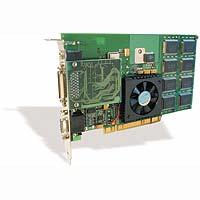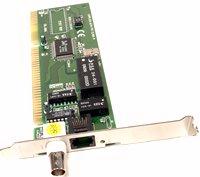|
|
![]() |
|
Home Page | Core Components | Storage Devices | Cards | Connectors | Peripherals |
| Optional Peripherals & Common PC Specs
| Computer Glossary | Order More Books
|

Cards
Cards are snapped into slots on the motherboard. They are
sometimes called expansion cards. You know them as the sound card or the video
card. Other cards that fit into the slots on the motherboard are
the modem and the NIC (network interface card).
Before we talk about the cards themselves, let's talk a
little about the motherboard and her slots that the cards will fit into.
Motherboard Diagram
(Click to view a diagram of a motherboard and get an view of
where the cards are inserted.)
- On the motherboard, there are AGP, PCI and ISA slots
that accommodate the expansion cards.
- Most new motherboards do not have ISA slots.
- Most older motherboards do not have PCI or AGP slots, but
they only have ISA slots.
- As a current rule of thumb, avoid ISA components and make
sure the motherboard’s BIOS (see glossary) can support plug and play (PCI) devices.
- PCI devices are all self-configuring (plug and play), and the
PCI technology functions independent of any type of CPU.
- To avoid ESD (electrostatic discharge), always handle the
cards by the silver, handle-like part of the card. Do not place your fingers on the
circuitry at the bottom of the card.
Video Card
- PC video cards are inserted onto the motherboard. They
provide a connection from the PC case to the monitor.

- Only video cards use AGP (accelerated graphics port). The AGP
is exclusively for video cards.
- However, you can select a PCI or ISA video card. (ISA video
cards are almost obsolete).
- Current state-of-the-art video cards provide dual connectors
with support for the flat panel, LCD monitors, as well as for the more common CRT monitor.
- Many new video cards also have a fan build onto the card. (As
the speed of the new cards and components increase, cooling becomes very important).
- When selecting a video card, choose AGP. Of course, you have
to make sure that the motherboard supports the AGP video card.
The Sound Card & Speakers
- The sound card provides the digital sound, like music and
voice.
- You can purchase either an ISA or PCI (bus type) sound card.
- PCI is better.

- You can tell the card’s bus type by its gold colored
module ( the bottom portion of the card).
- A SoundBlaster compatible card is preferred.
- On the circuitry part of most sound cards, there’s a
connection for the CD-ROM audio plug.
- Along the metal handle of the sound card, you'll find a
speaker jack, a microphone jack, headphone jack and a 15-pin connector for a joystick or
MIDI device.
- For fun, get a sound card that supports 4.1 speakers and
 purchase software that’s been written to use 3D technology. purchase software that’s been written to use 3D technology.
Modems & Network Cards
- Modems can be used to provide an Internet connection, send
and receive faxes and answer your telephone to record a message.
- Modems cards have two RJ-11 jacks.
- When you purchase a modem, be sure to have two telephone
cords.
 One cord goes from
one of the RJ-11 jacks, then into the telephone. The other cord goes into the other RJ-11
jack, then into the wall. One cord goes from
one of the RJ-11 jacks, then into the telephone. The other cord goes into the other RJ-11
jack, then into the wall.
- The modem will have pictures and/or words indicating which
jack is for the telephone, and which is for the wall.
- Technically speaking, the RJ-11 jacks are smaller than the
NIC card jack. It has 4 wires each while the NIC has 8 wires.
- The current modem standard is a 56k V.90 fax/modem.
- In the past, there were 33k, 28k, 19k, and lower
"baud" (see glossary) modems. After 56k, technology moved into faster ways to
send and receive data via NIC cards.
NICs (Network Interface Cards)
- A NIC is not a mandatory item to have on your computer.
- NICs allow computers to access the Internet using DSL, cable,
T1 and other types of high-speed network connections.

- Remember that the Internet allows you to have access to other
networks (computers connected to share files and folders).
- NICs allow you to set up a network in your home or office and
to access the Internet using DSL, cable or a high-speed service.
- NICs can have many different types of connectors. The most
common connector is called an RJ-45 connector.
- The NIC has only one RJ connector.
- Technically speaking, it has 8 wires, while the typical phone
jack has 4 wires.
- Other NIC connectors are called a BNC connector. The BNC
looks like a cable connector. There's also the DB connector.
- A NIC can have an RJ-45connector, a BNC connector and a DB
connector all on the same card.
|
Understanding PC Hardware, Second Edition, ©2003
Cary Muhammad, (All Rights Reserved), vipcomputers4u@yahoo.com |
